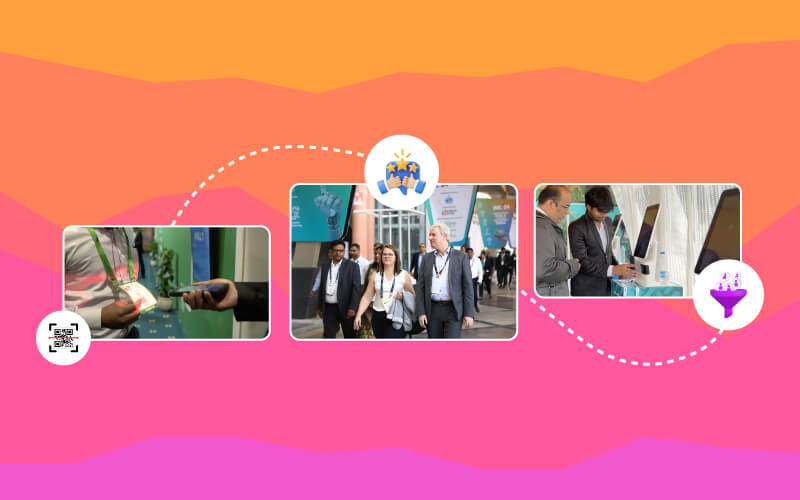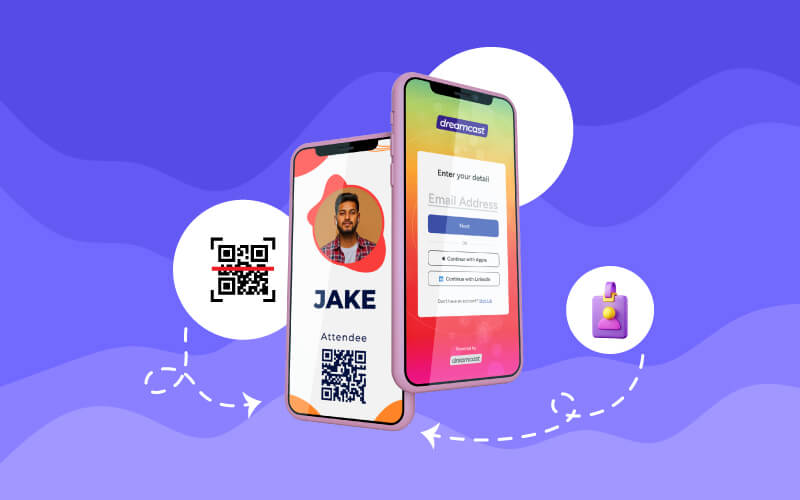Effective communication is a good starting point for any town hall meeting. An engaging approach to corporate communications will result in a successful town hall, whether in-person, virtual, or a hybrid of both. If a one-way town hall meeting is being run, communication becomes leadership talking to staff as opposed to an interaction, which depicts the staff listening (most times passively). A two-way town hall meeting is where employees share ideas after a leadership pitch or team engagement speech.
The question is—which method works best?
Should managers prepare a presentation and convey a message, or should they ask staff members questions and share their thoughts? In order to improve an organization’s performance in its corporate communication town hall, this blog will discuss communication methods, their advantages and disadvantages, and how to strike the correct balance.
Table of Contents
What Is a One-Way Town Hall Meeting?
A one-way town hall meeting is a top-down communication approach where leadership presents information to employees without real-time feedback or discussion. This format ensures that messages are delivered consistently and efficiently, making it ideal for structured corporate updates.

When to Use a One-Way Town Hall Meeting
The following situations are ideal for a one-way town hall meeting:
Company announcements: when leadership must convey important changes, such as mergers, acquisitions, rebranding, or financial updates.
Proper communication: When clear and concise messaging is required to maintain order and avoid misinformation.
Large-scale virtual or hybrid meetings: In a virtual town hall or hybrid town hall meeting, managing interactions from a large audience can be challenging. A one-way format ensures smooth delivery.
Advantages of One-Way Communication
Consistency in messaging: The information remains uniform and avoids misinterpretation.
Saves time: Meetings proceed more swiftly when there are no lengthy discussions or interruptions.
Reduces conflict: stays away from side topics that can compromise the meeting’s objective.
Excellent for big crowds: necessary for significant company announcements made during a virtual or corporate communication town hall.
Disadvantages of One-Way Communication
Lacks engagement: Employees may feel disconnected as they are not given a platform to share their thoughts.
No prompt response: Employee sentiment cannot be instantly assessed by leadership.
Possible misunderstanding: Employees may take a message differently if it is unclear, which could cause confusion.
What Is a Two-Way Town Hall Meeting?
Employees can ask questions, offer feedback, and discuss business-related topics during a two-way town hall meeting, which encourages participatory and open communication. This approach boosts greater collaboration and gives workers a sense of worth and inclusion.

When to Use a Two-Way Town Hall Meeting
A two-way town hall meeting is ideal for:
Employee feedback sessions: Leaders can understand employee concerns, suggestions, and expectations.
Stating the agenda with company culture and policy: This helps create an open, transparent workplace environment.
Keeping remote employees engaged: A virtual town hall or hybrid town hall meeting is particularly great because it encourages two-way communication and helps keep your remote participants engaged.
Advantages of Two-Way Communication
Promotes transparency: It also promotes transparency since it makes workers feel appreciated when they are allowed to freely express their thoughts and ask questions.
Boosts engagement: Interactive town hall sessions are more entertaining and memorable.
Provides in-time feedback: By allowing leadership to address the question immediately, confidence is built.
Fosters innovation: Employees may suggest ideas that can benefit the organization.
Disadvantages of Two-Way Communication
Time-consuming: Lengthy meetings might result from candid conversations.
Difficult to handle: Too many people talking at once at large sessions can be disruptive.
Off-topic conversation risk: In the absence of a well-organized agenda, talks may deviate from the main goals.
Comparing One-Way vs. Two-Way Communication
Organizations can select the best strategy for their corporate communication town hall, virtual town hall, or hybrid town hall meeting by being aware of the main distinctions between the two communication formats.
| Factor | One-Way Town Hall Meeting | Two-Way Town Hall Meeting |
| Message Control | High: Leadership controls messaging. | Medium: Employees can influence discussions. |
| Engagement | Low: Employees passively listen. | High: Employees participate actively. |
| Efficiency | High: Faster message delivery. | Low: Requires time for discussions. |
| Feedback | Minimal: No real-time input from employees. | Strong: Employees can ask questions and share opinions. |
| Best For | Major company updates, crisis communication. | Employee engagement, discussions, and innovation. |
The Role of Technology in Town Hall Meetings
Many groups are starting to use virtual town halls and hybrid town hall gatherings, which blend offline and online collaboration.
How Technology Enhances Both Communication Styles
Live Polling & Q&A Platforms: Leaders can obtain employee input without interfering with a one-way town hall meeting by using live polls or Q&A technologies.
Chat Features & Breakout Rooms: In a two-way town hall meeting, chat functions and breakout rooms enable employees to discuss topics in smaller groups.
AI-Powered Analysis: In both one-way and two-way communication, AI systems may evaluate employee responses and offer insights about levels of engagement.
By integrating these technologies, organizations can improve employee engagement and ensure a more productive corporate communication town hall.
Finding the Right Balance: A Hybrid Approach
While both one-way town hall meetings and two-way town hall meetings have their advantages, the best approach often lies in combining both styles.
How to Balance Both Methods:
Achieving the optimal balance between one-way and two-way town hall gatherings guarantees participation and clarity. Here’s how companies can effectively integrate the two approaches:
Start with One-Way Communication: Start the town hall on corporate communication by reading the leadership’s readouts. This ensures that everyone in the workforce is aware of important information and helps establish the tone. Define what key announcements, strategic goals, and company updates you will make. To make presentations more interesting and easy to understand, use slides, infographics, or videos.
Transition into Two-Way Communication: Following the monologue, spend some time interacting. Use resources such as surveys, live polls, Q&A sessions, or breakout conversations to promote involvement. This stage gives staff members a forum to express their opinions, seek answers, and voice their concerns about decisions made by the organization. In a virtual town hall or town hall hybrid, tools such as chat boxes, emoji reactions, and live voting tools can help with engagement and conversation.
Use Moderation Tools: A moderator should be assigned to maintain order and ensure that the conversations are productive. The moderator controls the meeting’s pace, keeps everyone focused on the subject, and makes sure everyone speaks in an orderly manner. This is helpful, especially in virtual town halls and hybrid town hall meetings, when it might be difficult to manage several chat inputs and voices at once. Moderators can also cluster similar questions together to optimize tweaking during Q&A sessions.
Follow Up with Employees: Communication shouldn’t stop when the town hall meeting does. Those who were unable to attend should be given a summary of the meeting, including a tape, the main points covered, and the next actions. Additionally, send out post-event surveys to find out how well the session was received by the staff. Ask staff members if they found the meeting worthwhile and had enough chances to voice their opinions. Also, inquire about what they would like to see improved in future gatherings.
By blending clarity (one-way) with engagement (two-way), organizations can create dynamic and impactful town hall meetings that meet the needs of all employees.
Best Practices for an Effective Town Hall Meeting
Ensuring that a town hall meeting is productive and engaging requires careful planning and execution. Here are some key strategies to maximize effectiveness:

Set a Clear Agenda: Clearly define topics and objectives ahead of time to maintain focus and avoid unnecessary potholes. Having a well-prepared agenda also helps town hall meetings of the one-way town hall meeting and two-way town hall meetings stay focused. Relevant updates to be discussed, clear agenda and expectations.
Encourage Participation: Use interactive surveys, live polls, and Q&A sessions to engage staff members. Two-way town hall meetings encourage employees to provide feedback, allowing for more open and feedback-rich conversations. Unlike one-way meetings, they foster interaction, even though polls and chat features help gather opinions without disrupting the flow. Employees feel acknowledged and appreciated in a workplace that is open and engaging.
Make It Accessible: Provide multiple options for distant participants to engage in a hybrid town hall or virtual town hall. For better accessibility, stream high-quality audio and video with closed captions or real-time transcription. Allowing distant workers to vote in polls or raise questions will guarantee that they have the same chance to participate as those who are there in person.
Effective Time Management: Set time limits for updates, discussions, and Q&A sessions to ensure that the meeting starts on schedule. In this situation, moderators are crucial for guiding discussions and removing obstacles. The parties involved can avoid lengthy meetings while ensuring that their main issues are covered by sticking to the time provided.
Follow Up with Key Takeaways: After the meeting, provide access to the recording of the session or send a follow-up email summarizing the key findings. Make use of action items, staff contributions, and significant announcements. Suggestions for enhancing business communication, a follow-up survey will also collect information from municipal halls. By outlining the following steps in detail, you can turn the discussion from a disagreement into meaningful action.
Conclusion
The choice between a one-way town hall meeting and a two-way town hall meeting depends on the organization’s goals. While one-way communication is great for delivering structured messages, two-way communication fosters engagement and trust.
Therefore, it is evident that all companies may use technology to effectively connect with their employees through corporate communication town halls, including virtual town hall meetings and hybrid town hall meetings.





















